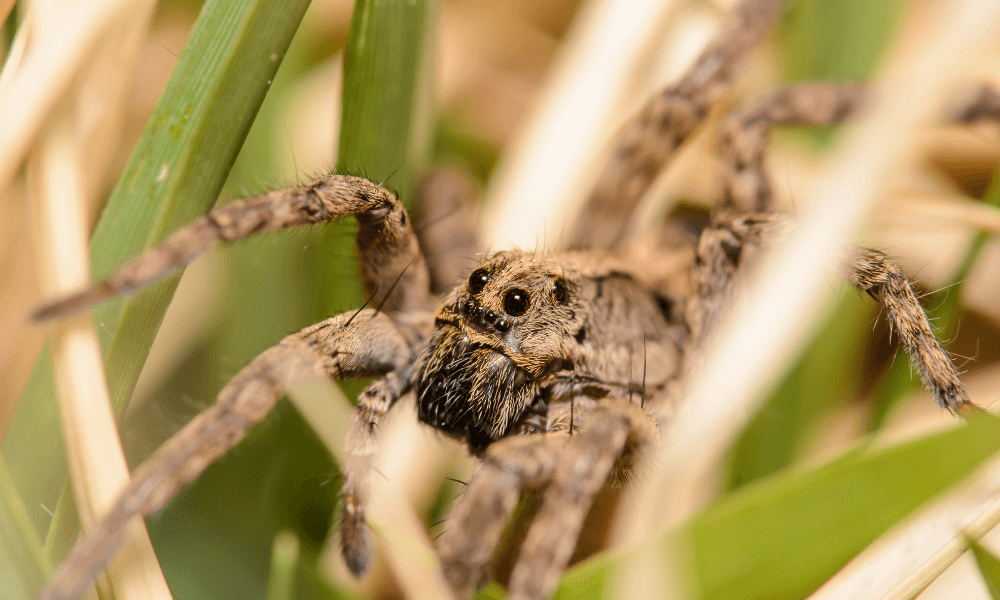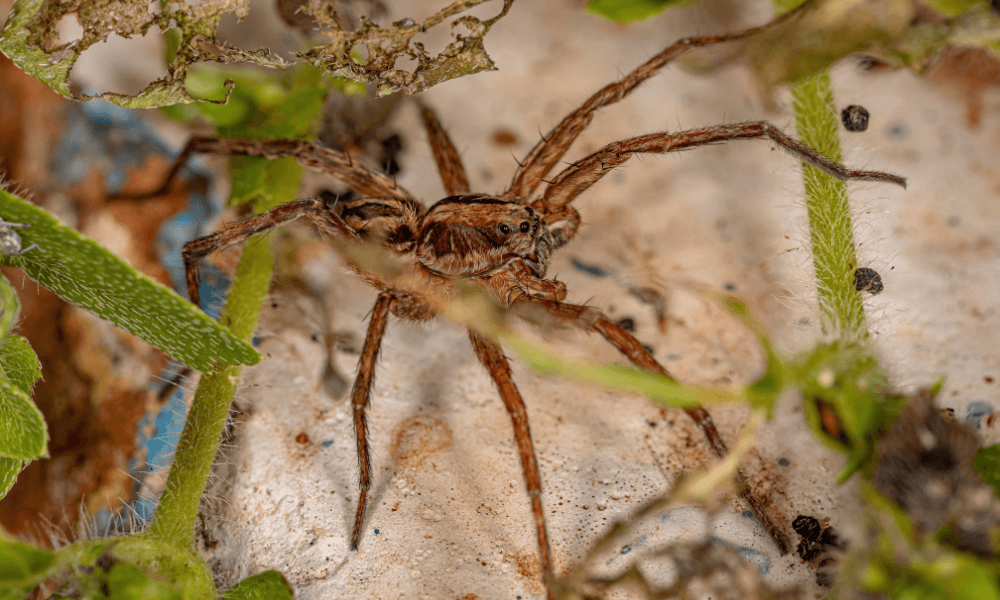Ever watched a tiny spider outpace your shadow? Chances are, it was a baby wolf spider—nature's nimble navigator.
Have you ever stumbled upon a small spider, its body covered in distinctive hairs, darting across your floor or garden, leaving you wondering whether it was a friend or foe?
Today, let's demystify one of the most common and misunderstood arachnids: the baby wolf spider. This guide will help you identify baby wolf spiders and provide insights into their beneficial nature.
What are baby wolf spiders?
Baby wolf spiders, often mistaken for tiny terrors due to their hairy bodies, are the juvenile stages of their species. Unlike many spiders that spin webs to catch prey, wolf spiders are free-roaming hunters, recognized by their robust bodies, swift movements and excellent eyesight. When you spot a spider with a distinctly hairy appearance and an unmistakable athletic build, you're likely looking at a wolf spider. These spiders can vary in color but generally blend well with their environment—a tactical advantage against predators and prey.
From birth, these hairy spiders are independent. They emerge from egg sacs fully equipped to survive and hunt, making them one of the more self-sufficient juvenile spiders. Initially, they may stay close to the birth site, but soon after, they disperse to fend for themselves, each embarking on a life of solitary hunting.

Naming fact: Did you know? The name 'wolf spider' derives from their hunting behavior, reminiscent of how wolves hunt in the wild. These spiders do not wait in a web; instead, they pounce on their prey with ferocity, much like a wolf on the prowl.
Hunting fact: In terms of hunting tactics, wolf spiders have a rather gruesome yet fascinating method: after capturing their prey, they either crush it into a pulp or inject venom, liquefying the insides to create a slurry-like smoothie for easy consumption and maximum nutrition intake.
Identifying features of baby wolf spiders
Identifying a baby wolf spider involves looking for several key characteristics.
First, their size: Baby wolf spiders start out extremely small, typically just a few millimeters when they first hatch. They undergo several molts—each stage seeing them grow larger—as they progress toward adulthood. The process from hatching to reaching adult size can take about one year, depending on environmental conditions such as temperature. The most noticeable growth occurs just after each molt, making these times when you're more likely to notice these spiders as they are temporarily more vulnerable and may be seen in the open more often. By adulthood, they can measure up to two inches across, making them one of the larger spider species encountered around homes and gardens.
Second, their behavior: On the ground is where you’ll find baby wolf spiders excelling. They stick close to the earth, hidden under rocks, leaves or debris, seldom venturing into the high realms. It's their way of staying out of sight while keeping close to their next meal.
Third, their hair: The hairiness of baby wolf spiders is a distinct physical trait and a crucial sensory tool. These spiders are covered with fine hairs that serve multiple purposes. Beyond providing camouflage among leaves and soil, these hairs are highly sensitive to vibrations and air currents, acting as an early warning system to detect approaching predators or the subtle movements of potential prey. This feature is vital for their survival in the wild, where being attuned to the slightest disturbance can mean the difference between catching their next meal and becoming one.

Fourth, their coloring: Baby wolf spiders exhibit a color palette that blends seamlessly with their natural surroundings. Typically, their bodies feature shades of black, gray, tan, and brown, adorned with distinct dark markings that often appear as stripes. These markings are not just for show; they play a crucial role in camouflage, helping the spiders stay hidden from predators and prey. The variation in their coloration can also help you distinguish them from other spider species, making it easier to identify them during their juvenile stages.
Fifth, their eyes: Baby wolf spiders have a distinctive eye arrangement that sets them apart from other spider species. They possess three rows of eyes: the bottom row consists of four small eyes in a straight line, the middle row has two larger eyes, and the top row features two medium-sized eyes that are often more pronounced. This unique setup grants them excellent nocturnal vision and a broad field of view, enhancing their ability to detect movement and hunt effectively at night.
Creepy fact: At night, the reflective layer in the large eyes of wolf spiders, known as the tapetum, causes them to shine brightly, making them easier to spot in the dark.
Identification tip: While identifying these creatures, keep in mind that wolf spiders love to roam freely. In contrast, black widows stick close to their webs, and brown recluses hide out in quieter, undisturbed places like attics or behind walls—far from human activity.
Are baby wolf spiders dangerous?
Many people are concerned when they spot a baby wolf spider, mainly due to its size and hairy appearance, which would surely seem threatening. However, these hairy spiders are far from dangerous to humans. Baby wolf spiders possess venom, but it is only potent enough to subdue their small insect prey and poses no serious threat to humans. Their bites are rare and typically result only in minor symptoms such as redness or itching, which quickly subside on their own. Despite their fierce appearance, baby wolf spiders are not aggressive towards humans; they are solitary creatures that prefer to avoid any interaction.
Are baby wolf spiders good for a garden?

Absolutely, these small, hairy spiders are excellent guardians of garden health, preying on common pests and maintaining the natural balance.
These spiders thrive in natural garden settings where they inhabit leaf litter, grassy patches, and make retreats in soil holes or tunnels. Such environments are also found under garden-related debris like boards, stones, and even piles of firewood.
The presence of baby wolf spiders in your garden plays a crucial role in natural pest control. By preying on common garden pests such as aphids, which can devastate plant life, mosquitoes that carry diseases, and flies that spread bacteria, they help reduce the need for chemical pesticides.
Creepy fact: Wolf spiders live just about everywhere. From volcanic lava tubes and cold mountaintops to lush rainforests, and even your own backyard. They are so versatile that one species even hunts pests in wheat fields.
How to coexist with baby wolf spiders
Coexisting with baby wolf spiders means creating an environment where they can thrive without becoming a nuisance.

- Ensure that your home is free from unwanted gaps and cracks—as these can serve as entry points for all manners of spiders and pests.
- Regularly organize and declutter areas like basements, attics, and closets—to effectively minimize hiding spots for spiders and their prey.
- Store items in sealed containers rather than cardboard boxes—as cardboard boxes can attract pests.
- Keep your garden tidy. Remove old plant matter, stacking wood neatly off the ground, and trimming back dense vegetation.
If you encounter a hairy wolf spider inside your home, consider humane capture and relocation instead of killing them, especially if it's a female. Female wolf spiders carry their egg sacs attached to their abdomen, and upon feeling threatened or being squished, they can inadvertently release their clutch. Each egg sac can contain up to a hundred spiderlings that, if released, could lead to a much larger issue as they disperse throughout your property.
To safely manage this, gently trap the spider with a glass and a piece of paper and release her outside where she can continue her role in the ecosystem. This not only prevents the potential spread of numerous new spiders in your living space but also helps maintain the natural balance by allowing these beneficial predators to thrive outdoors.
Mating fact: Male wolf spiders put on a captivating show to win over mates, rhythmically waving their elongated mouthparts or drumming on leaves in a mesmerizing dance.
Conclusion

Encountering a baby wolf spider, with its hairy and robust body, can be an opportunity, not a nuisance. By understanding their habits and benefits, you recognize these spiders as invaluable allies in controlling pests naturally. Ready to ensure these helpers thrive properly without becoming an indoor issue? Equip yourself with Dr. Killigan's Dust to Dust Plant-Powered Insect Powder. Safe, effective, and non-toxic, it's the perfect defense against pests, preserving the natural balance both in your garden and indoors.
Every creature has a role in the ecosystem, and by choosing Dr. Killigan’s, you choose a balanced, environmentally conscious approach to pest control. Don’t wait for pests to become a problem—take charge now and enjoy a pest-free environment. Visit Dr. Killigan's now to learn more about sustainable pest solutions and order your Dust to Dust for peace of mind all season long.





















